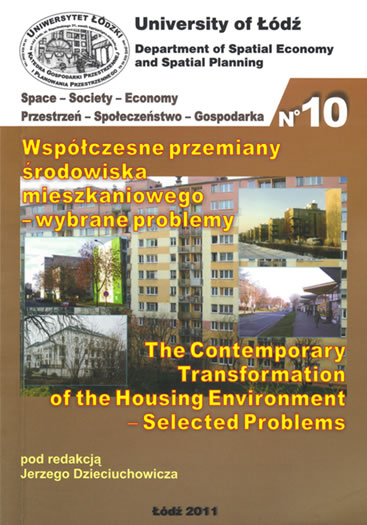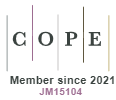WSPÓŁCZESNA ZABUDOWA REZYDENCJONALNA. PRZYKŁAD ŁODZI
DOI:
https://doi.org/10.18778/1733-3180.10.04Słowa kluczowe:
Łódź, zabudowa rezydencjonalnaAbstrakt
In Łódź , contemporary residential buildings started to be developed simultaneously to free market and private ownership of means of production introduction. Since then companies have been able to invest their surpluses in the development of magnificent residential buildings. However, the new structures are not as impressive as the 19 c. ones. The new constructions have a more residential then representative function. They are design to be very comfortable houses, preferably isolated from the neighbourhood. In the paper the author used the urban criteria applied to determined residential buildings in Poland. This means that the surface area of an estate should be larger then 2 000 meter sq., a plot for development should be bigger then 300 meter sq. and it should not be higher than three storeys. Taking into consideration its physiognomy it should also be finished with a superior standard of materials and include such facilities as a swimming pool, tennis court or winter garden. In 2007, there were only 150 such buildings in Łód – their localisation are shown in picture no. 1. Spatial distribution of new residential buildings is correlated to the availability of plots. Because of the price of residential grounds spacious representative houses were built mainly on the outskirts of the town, having been surrounded by new and old single-family housing. They are not in easy reach since they were located away from main roads. Location seems to be random in many cases. Impressive houses do not correspond with their surroundings. Residences function rather as asylums for their dwellers and are carefully protected by guards and watchdogs. New residential areas constitute only 0,6% of the town overall territory. Because of the shortage of available plots those who can afford to take over park land or woodland areas which should be assessed as a negative phenomenon.
Pobrania
Bibliografia
Błaszko A., Skrzypek-Łachińska M., 2004, Architektura mieszkaniowa: współczesne trendy projektowe w kształtowaniu domów mieszkalnych, Wyd. Politechniki Gdańskiej, Gdańsk.
Google Scholar
Groeger L., 2004, Waloryzacja przestrzeni mieszkaniowej w opiniach klientów łódzkich biur obrotu nieruchomościami, Wyd. UŁ, Łódź.
Google Scholar
Groeger L., 2009, Atlas Miasta Łodzi – suplement, plansza LV: Nowe obszary rezydencjonalne w Łodzi. Stan w roku 2007, ŁTN, UMŁ, Łódź.
Google Scholar
Kaczmarek S., 1996, Struktura przestrzenna warunków zamieszkania w Łodzi, „Szlakami Nauki”, nr 23, Wyd. ŁTN, Łódź.
Google Scholar
Liszewski S., 1978, Tereny miejskie. Podział i klasyfikacja, „Acta Universitatis Lodziensis. Folia Geographica”, ser. II, nr 15, Łódź.
Google Scholar
Marszał T., Stawasz D., 2006, Przestrzeń rezydencjalna w miastach polskich, „Biuletyn KPZK PAN”, z. 227, Warszawa.
Google Scholar
Szolginia W., 1982, Architektura i budownictwo, Wyd. Nauk. Tech., Warszawa.
Google Scholar
Pobrania
Opublikowane
Jak cytować
Numer
Dział
Licencja

Praca jest udostępniana na licencji Creative Commons Attribution-NonCommercial-NoDerivatives 3.0 Unported License.









